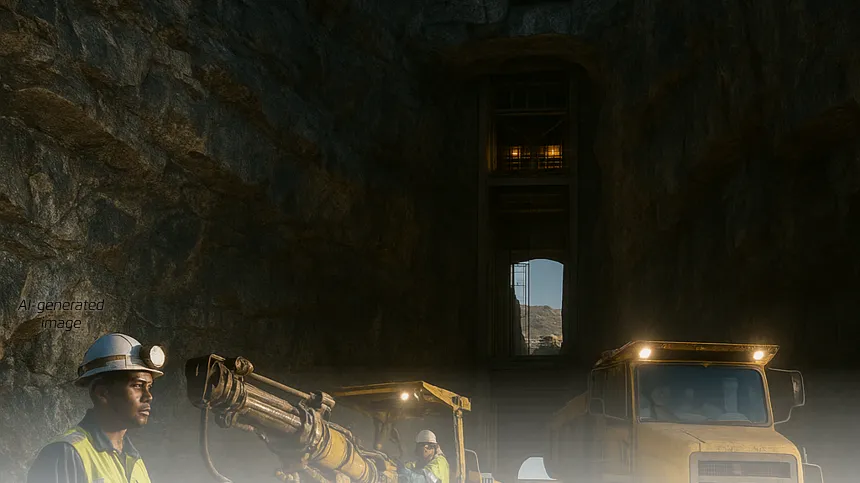Valterra Eyes Deep Growth: Mogalakwena’s Underground Frontier

Valterra Platinum advances Mogalakwena’s shift underground, targeting higher PGM grades and long-term sustainability in South Africa’s Limpopo.
Valterra Platinum is embarking on one of South Africa’s most ambitious underground mining transitions, advancing plans to extend the life and profitability of its flagship Mogalakwena PGM (Platinum Group Metals) mine in Limpopo Province. Long renowned as one of the world’s largest and most efficient open-pit platinum operations, Mogalakwena is now entering a new frontier, its deep, high-grade underground potential. With only about 14% of the total resource mined over three decades and an estimated life of mine exceeding 150 years, Valterra’s strategy represents a calculated evolution from surface extraction to sustainable, high-value underground development.
The company’s Sandsloot resource, the site of Mogalakwena’s original open pit, will serve as the transition zone for underground mining. A prefeasibility study completed in H1 2025 confirmed underground reef grades of 4 to 6 grams per tonne (g/t), significantly higher than current open-pit grades, offering a compelling opportunity to improve both revenue and metal recovery through blending strategies. Valterra plans a two-phase rollout, beginning with trial mining in late 2026 to gather real-time geotechnical and economic data, feeding into a definitive feasibility study scheduled for completion by H1 2027. Should the results prove favorable, full-scale development could begin toward the end of the decade, with underground output ramping up to 3.6–4.5 million tonnes per year after 2030.
This underground expansion is designed to complement, not replace, Mogalakwena’s thriving open-pit operations. The company continues to optimize surface mining efficiency through targeted drilling programs, refined blasting techniques, and a revised mine plan emphasizing the northern pit zones, an adjustment that lowers both strip ratios and haulage distances, thereby reducing fuel consumption and costs. On the processing front, the mine’s two concentrators (North and South) remain critical infrastructure assets. The North concentrator has recently been upgraded with a Jameson cleaner circuit, a high-efficiency flotation system that improves metal recovery and reduces reagent consumption.
Equally important, Valterra is reinforcing its environmental and tailings management systems. The expansion of the Blinkwater 2 tailings storage facility ensures full compliance with the Global Industry Standard on Tailings Management (GISTM). Advanced drone and satellite-based monitoring technologies are also being deployed to provide real-time structural and environmental surveillance, an approach that enhances safety and transparency.
Valterra’s spin-off from Anglo American in 2025 has redefined it as a streamlined, independent PGM producer with sharper operational focus and strategic autonomy. The company’s underground ambitions at Mogalakwena symbolize both continuity and transformation: maintaining the mine’s legacy of excellence while adapting to the geological and economic realities of the next century.
If executed successfully, this underground development could elevate Valterra into the top tier of sustainable platinum producers globally, ensuring steady output and reduced environmental footprint. For South Africa, it signals renewed confidence in the platinum sector’s long-term viability, blending innovation, efficiency, and responsibility to secure the nation’s role as the world’s PGM powerhouse.
Mini-Glossary
- PGM (Platinum Group Metals): A family of six precious metals; platinum, palladium, rhodium, ruthenium, iridium, and osmium, used in catalytic converters, electronics, and hydrogen technologies.
- Grade (g/t): The concentration of metal in ore, measured in grams per tonne; higher grades usually indicate more valuable deposits.
- Strip Ratio: The ratio of waste material to ore mined in open-pit operations; lower ratios mean less waste removal and lower costs.
- Jameson Cleaner Circuit: A flotation system that improves mineral recovery and concentrate quality through fine-bubble separation technology.
- Tailings Storage Facility (TSF): Engineered containment area for storing the waste material left after mineral extraction.
- GISTM Compliance: Adherence to the Global Industry Standard on Tailings Management, which defines best practices for tailings safety and governance.
- Feasibility Study: A detailed technical and economic assessment conducted before final investment decisions in mining projects.
